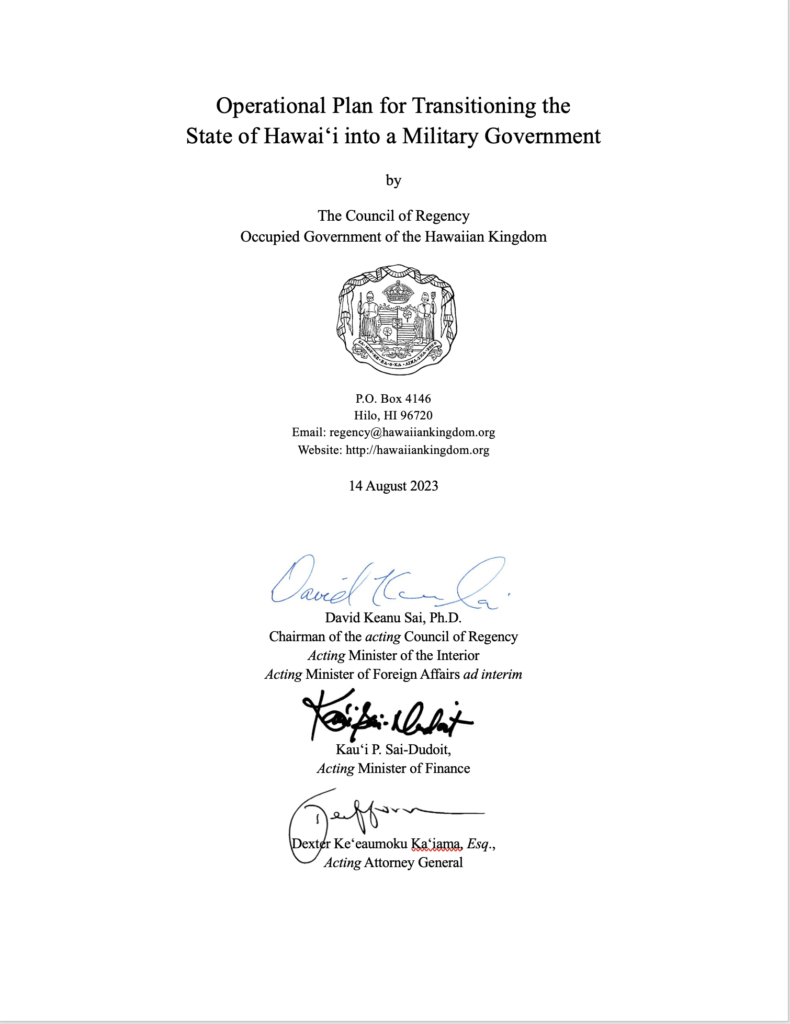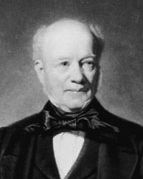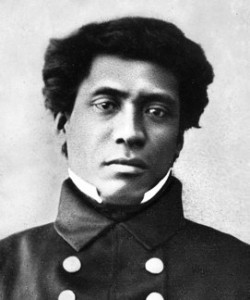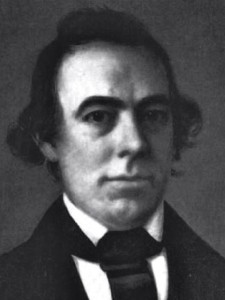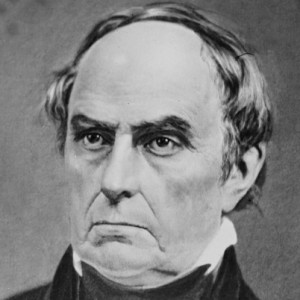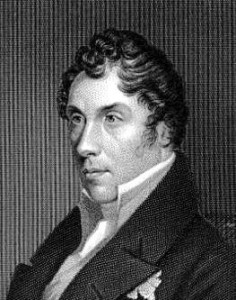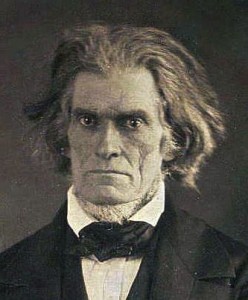Determined to hold to account individuals that have committed war crimes and human rights violations throughout the territorial jurisdiction of the Hawaiian Kingdom under this prolonged occupation by the United States, the Council of Regency, by Proclamation on April 17, 2019, established a Royal Commission of Inquiry (“Royal Commission”) in similar fashion to the United States proposal of establishing a Commission of Inquiry after the First World War “to consider generally the relative culpability of the authors of the war and also the question of their culpability as to the violations of the laws and customs of war committed during its course.”
In accordance with Hawaiian administrative precedence in addressing crises, the Royal Commission was established by “virtue of the prerogative of the Crown provisionally vested in [the Council of Regency] in accordance with Article 33 of the 1864 Constitution, and to ensure a full and thorough investigation into the violations of international humanitarian law and human rights within the territorial jurisdiction of the Hawaiian Kingdom.” His Excellency, Dr. David Keanu Sai, Ph.D., was designated as Head of the Royal Commission, and Dr. Federico Lenzerini, Ph.D., as Deputy Head. Pursuant to Article 3 – Composition of the Royal Commission, the Head of the Royal Commission has been authorized to seek “recognized experts in various fields.”
The Royal Commission has acquired legal opinions from the following experts in international law: on the subject of the continuity of the Hawaiian Kingdom under international law, Professor Matthew Craven from the University of London, SOAS, School of Law; on the subject of the elements of war crimes committed in the Hawaiian Kingdom since 1893, Professor William Schabas, Middlesex University London, School of Law; and on the subject of human rights violations in the Hawaiian Kingdom and the right of self-determination by the Hawaiian citizenry, Professor Federico Lenzerini, University of Siena, Italy, Department of Political and International Studies. These experts, to include the Head of the Royal Commission, are the authors of chapters 1, 2, 3, 4, and 5 of Part II of the Royal Commission’s eBook – The Royal Commission of Inquiry: Investigating War Crimes and Human Rights Violations Committed in the Hawaiian Kingdom.
According to Article 1(2), “The purpose of the Royal Commission shall be to investigate the consequences of the United States’ belligerent occupation, including with regard to international law, humanitarian law and human rights, and the allegations of war crimes committed in that context. The geographical scope and time span of the investigation will be sufficiently broad and be determined by the head of the Royal Commission.”
Article 1(3) provides, “The results of the investigation will be presented to the Council of Regency, the Contracting Powers of the 1907 Hague Convention, IV, respecting the Laws and Customs of War on Land, the Contracting Powers of the 1949 Geneva Convention, IV, relative to the Protection of Civilian Persons in Time of War, the Contracting Powers of the 2002 Rome Statute, the United Nations, the International Committee of the Red Cross, and the National Lawyers Guild in the form of a report.”
In Restatement (Third) of Foreign Relations Law of the United States, it recognizes that when “determining whether a rule has become international law, substantial weight is accorded to…the writing of scholars.” According to Black’s Law, 6th ed., United States courts have acknowledged that the “various Restatements have been a formidable force in shaping the disciplines of the law covered [and] they represent the fruit of the labor of the best legal minds in the diverse fields of law covered.” The Restatement drew from Article 38(1)(d) of the Statute of the International Court of Justice, which provides that “the teachings of the most highly qualified publicists of the various nations [are] subsidiary means for the determination of rules of [international law].” These “writings include treatises and other writings of authors of standing.” Professors Craven, Schabas, and Lenzerini are “authors of standing” and their legal opinions are “sources” of the rules of international law.
The Royal Commission would first provide Preliminary Reports on various subjects relative to its mandate, followed by periodic Reports of its investigation of war crimes that meet the constituent elements of mens rea and actus reus, and human rights violations.
Criminal Report no. 22-0001
The day of reckoning has finally arrived through Hawaiian law for those individuals who have been found “guilty” of the crime of treason. After three years of preliminary reports, the Royal Commission has just published its first Criminal Report no. 22-0001 regarding the insurgency of 1893 and attainder of treason.
For over a century, members of the Provisional Government and its successor the Republic of Hawai‘i were not held accountable for their treasonous actions on January 17, 1893, in the unlawful overthrow of the government of the Hawaiian Kingdom under the protection of U.S. troops that invaded Honolulu the day before. Although war crimes and human rights violations did not exist at the time under international law, the high crime of treason did under Hawaiian Kingdom law.
Some of the insurgents came to be known as the Big Five, a collection of five large businesses, that wielded considerable political and economic power after 1893 to benefit themselves. The Big Five were Castle & Cooke, Alexander & Baldwin, C. Brewer & Co., American Factors (now Amfac), and Theo H. Davies & Co. In a May 3, 1940 report on the Hawaiian Islands by Elwyn J. Eagen to the Congressional Special House Committee on the National Labor Relations Act, he stated:
Virtually every business of any importance is owned or controlled by the so-called “Big-Five.” These companies have interlocking directorships. This method of obtaining joint action extends not only to the companies named but also to various subsidiary corporations. Most of the land in the Islands is owned or controlled by the same group which manage the affairs of the “Big Five.” There are no independent banks on the Islands. All of the banks are controlled by virtually the same people who are interested in the “Big-Five.” By controlling loans, the officers of the “Big Five” are able to keep semi-independent business men from engaging in activities hostile to their interests. They are also able to know the financial condition of all the inhabitants of the Islands. Persons who do not comply with the wishes of the “Big Five” are refused loans or extension and are forced out of business.
In the Statute Laws of 1846, section 7, it was enacted: “[l]and so patented [that is purchased from the Government] shall never revert to the king of these islands, nor escheat to this government, for any other cause than attainder of high treason, as defined in the criminal code (emphasis added).” Among the prerogatives of the king that affect lands is “[t]o punish for high treason by forfeiture, if so the law decrees.” The King’s superior right to forfeiture was transferred to the government when the Hawaiian Kingdom became a constitutional monarchy. Under the treason statute, which has no degrees, the Penal Code states:
- Treason is hereby defined to be any plotting or attempt to dethrone or destroy the King, or the levying of war against the King’s government, or the adhering to the enemies thereof, giving them aid and comfort, the same being done by a person owing allegiance to this kingdom.
- Allegiance is the obedience and fidelity due to the kingdom from those under its protection.
- An alien, whether his native country be at war or at peace with this kingdom, owes allegiance to this kingdom during his residence therein, and during such residence, is capable of committing treason against this kingdom.
- Ambassadors and other ministers of foreign states, and their alien secretaries, servants and members of their families, do not owe allegiance to this kingdom, though resident therein, and are not capable of committing treason against this kingdom.
- To constitute the levying of war, contemplated in the first section of this chapter, it shall be requisite that the persons concerned therein be parties to some overt act, in or towards procuring, preparing or using force, or putting themselves in a condition in readiness to use force, either by being present at such overt act, or by promoting, aiding in, or being otherwise accessory before the fact to the same.
- In order to constitute the levying of war, the force must be employed or intended to be employed for the dethroning or destruction of the King or in contravention of the laws, or in opposition to the authority of the King’s government, with an intent or for an object affecting some of the branches or departments of said government general, or affecting the enactment, repeal or enforcement of laws in general, or of some general law; or affecting the people, or the public tranquility generally; in distinction from some special intent or object, affecting individuals other than the King, or a particular district.
- An accessory before the fact to treason is guilty of treason, and shall be subject to prosecution, trial and punishment therefor, though the principals more directly concerned have not been convicted, or are not amendable to justice.
- No person shall be convicted of treason but by the testimony of two or more lawful witnesses to the same overt act of treason whereof he stands charged, unless he shall in open court, confess such treason.
- Whoever shall commit the crime of treason, shall suffer the punishment of death; and all his property shall be confiscated to the government.
- If any person who shall have knowledge of the commission of treason against this kingdom, shall conceal the same, and shall not, as soon as may be, disclose and make known such treason to the Governor of the island on which he resides, he is guilty of a great crime, and shall be punished by a fine not exceeding five thousand dollars, or imprisonment at hard labor not exceeding ten years, in the discretion of the court.
By specific reference to the term attainder, the Hawaiian legislature adopted the English common law on high treason. In The King v. Agnee et al., the Hawaiian Supreme Court stated, “[w]e do not recognize as conclusive the common law nor the authorities of the courts of England or of the United States, any farther than the principles which they support may have become incorporated in our system of laws, and recognized by the adjudication of the Supreme Court.” In Agnee, the Court cited English common law commentators on criminal law such as Chitty and Bishop as well as English criminal cases.
Under English common law, attainder of high treason is a metaphor that has the effect of the corruption of blood resulting from the commission of high treason along with reversion of property by escheat, both real and personal, to the king or government. Attainder is under “common law, that extinction of civil rights and capacities which took place whenever a person who had committed treason or felony received sentence of death for his crime. The effect of ‘attainder’ upon such felon was, in general terms, that all his estate, real and personal, was forfeited. At the common law, attainder resulted in three ways, viz: by confession, by verdict, and by process or outlawry (emphasis added).”
By “process,” attainder resulted by an act of Parliament called a bill of attainder, which Edward Coke critiqued as a process that lacked provable evidence but acknowledged that the Parliament did have the authority to attaint for high treason. When Henry VIII ascended to the throne in 1509, “attainder by parliament was an established means of dealing with special offenders, particularly those who posed a threat to the security of the king and his realm.” John Hatsell’s Precedents of Proceedings in the House of Commons that was published in 1781 explains:
Although it is true, that this measure of passing Bills of Attainder…has been used as an engine of power…it is not therefore just to conclude, that no instances can occur, in which it ought to be put in practice. Cases have arisen…and may again arise, where the public safety, which is the first object of all government, has called for this extraordinary interference; and, in such instances, where can the exercise of an extraordinary power be vested with more security, than in the three branches of the legislature [Monarch, House of Lords, House of Commons]? It should, however, always be remembered, that this deviation from the more ordinary forms of proceeding by indictment or impeachment, ought never to be adopted, but in cases of absolute necessity; and in those instances only, where, from the magnitude of the crime, or the imminent danger to the state, it would be a greater public mischief to suffer the offence to pass unpunished, than even to over-step the common boundaries of law; and…by an exemplary through extraordinary proceeding, to mark with infamy and disgrace, perhaps to punish with death, even the highest and most power offenders.
In Coke’s commentary on the 1352 Statute of Treasons in the Third Institute, he explains that the term “attaint” in the statute “necessarily implieth that he be proceeded with, and attainted according to the due course, and proceedings of law, and not by absolute power.” The suspect, according to Coke, had to be attainted with direct proof of evidence and not attainted with the probability of evidence. He explains, “This doth also strengthen the former exposition of the word (provablement,) that it must be provably, by an open act, which must be manifestly proved.”
According to William Blackstone, “ANOTHER immediate consequence of attainder is the corruption of blood, both upwards and downwards; so that an attainted person can neither inherit lands or other hereditaments from his ancestors, nor retain those he is already in possession of, nor transmit them by descent to any heir; but the same shall escheat to the lord of the fee, subject to the king’s superior right of forfeiture: and the person attainted shall also obstruct all descents to his posterity, wherever they are obliged to derive a title through him to a remoter ancestor.”
Section 8 of the Hawaiian treason statute addresses the first two ways where attainder results by conviction by trial or confession without trial. The third way is by “process” or “outlawry.” The latter was a process during the medieval period in England for the county court or by writ declared a fugitive on the run for the commission of treason an “outlaw.” The former could be done by a bill of attainder or law of attainder enacted by the English Parliament and signed into law by the Monarch. While the United States constitutionally prohibits bills of attainder, where “[n]o bill of attainder or ex post facto Law shall be passed,” and Great Britain abolished practically all the law of forfeiture and escheat for treason and felony in 1870, the Hawaiian Kingdom has no such prohibition, which would allow bills of attainder to be enacted by the Legislative Assembly, but no such bill has ever been enacted.
While bills of attainder were a product of domestic law of a State and not the courts, they could also result as a consequence of a “process” of international law by virtue of a treaty between the governments of two States where the negotiations and agreement included, inter alia, the subject of high treason as defined by a State’s domestic law. This was precisely the case of the Agreement of Restoration entered into between Queen Lili‘uokalani and President Grover Cleveland on 18 December 1893.
Of the three modes of attainting a person or persons of the high crime of treason under English common law, the insurgents were attainted by “process” as evidenced in President Cleveland’s six-month investigation from 1 April to 18 October 1893, and acknowledged by Queen Lili‘uokalani in the Agreement of Restoration of 18 December 1893. The condition of the Agreement of Restoration for the Queen, after being restored to the throne, “to grant full amnesty as to life and property to all those persons who have been or who are now in the Provisional Government, or who have been instrumental in the overthrow of your government,” presupposes that these persons were guilty of committing the high crime of treason, and, therefore, were attainted. According to Black’s Law Dictionary, amnesty is a “sovereign act of forgiveness for past acts, granted by a government to all persons (or to certain classes of persons) who have been guilty of…treason. … Included in the concept of pardon is ‘amnesty,’ which is similar in all respects to a full pardon, insofar as when it is granted both the crime and punishment are abrogated; however, unlike pardons, an amnesty usually refers to a class of individuals irrespective of individual situations (emphasis added).” The Queen, however, was not restored and, therefore, amnesty was not granted to those found guilty of treason by a “process.”
As a person who is attainted by a conviction of treason by a court of law whereby escheat occurs at the moment of the commission of the crime so that all intervening dealings with the property are avoided, escheat for a person attainted by a “process,” like a bill of attainder or the Agreement of Restoration, occurs at the moment of the commission of the crime as well. Section 9 of the treason statute states, “[w]hoever shall commit the crime of treason, shall suffer the punishment of death; and all his property shall be confiscated to the government.” The term “property” in the statute includes both real and personal.
According to Thomas Tomlins, in the Law-Dictionary explaining the Rise, Progress, and Present State of the British Law, vol. 1 (1835), as “to Corruption of Blood, this operates upwards and downwards, so that an attainted person can neither inherit lands or other hereditaments from his ancestors, nor retain those he is already in possession of, nor transmit them by descent to any heir; but the same shall escheat to the lord of the fee, subject to the king’s superior right of forfeiture; and the person attainted shall also obstruct all descents to his posterity, wherever they are obliged to derive a title through him to a remoter ancestor.” Therefore, all persons who were guilty of the crime of high treason, their real property escheated to the Hawaiian government, and their ownership to personal property vested in the Hawaiian government at the moment they committed the crime of treason since 17 January 1893 and suffers the pains and penalties from the effects of the doctrine of the corruption of blood thereafter.
One of the Big Five is Alexander & Baldwin, Ltd. The history of Alexander and Baldwin goes back to 1869 when Samuel T. Alexander and Henry P. Baldwin entered into a partnership called the Haiku Sugar Company on Maui. The Hawaiian Commercial & Sugar Company, formerly owned by Claus Spreckels, was later acquired by Alexander & Baldwin, as well as Kihei Plantation.
While Alexander left the islands in 1883 because of bad health and settled in Oakland, California, he continued his business relation with Baldwin in the Hawaiian Kingdom. In 1894, the partners formed a new firm in San Francisco under the name of Alexander & Baldwin, for the purpose of conducting a general commercial business and handling their plantation interests in the United States. A branch was established in Honolulu in 1897 where the main office was located. The firm was incorporated as Alexander & Baldwin, Ltd., in 1900 with Baldwin as its president.
At the time of the overthrow of the government of the Hawaiian Kingdom, Baldwin was living on the island of Kaua‘i and was an active member of the Annexation Club. In a letter to U.S. Special Commissioner James Blount dated April 25, 1893, Baldwin stated, “I have acquired considerable property and represent plantations that have this year an output of about 23,000 tons of sugar.”
On May 30, 1894, Baldwin participated in the Republic of Hawai‘i’s constitutional convention. Because Baldwin was found guilty of treason by “process,” he was attainted on May 30, 1894 when he committed the high crime and all his property, both real and personal escheated and reverted to the government of the Hawaiian Kingdom. Despite the government of the Hawaiian Kingdom was not restored until 1997 by a Council of Regency, the office of the government of the Hawaiian Kingdom was vested with Baldwin’s property as a consequence of a breach of Hawaiian law. And under the doctrine of corruption of blood, the family of Baldwin was prevented from any lawful inheritance through or from Baldwin because he was stained with treason.
For a list of all persons found guilty of the high crime of treason download the Royal Commission’s Criminal Report no. 22-0001.

